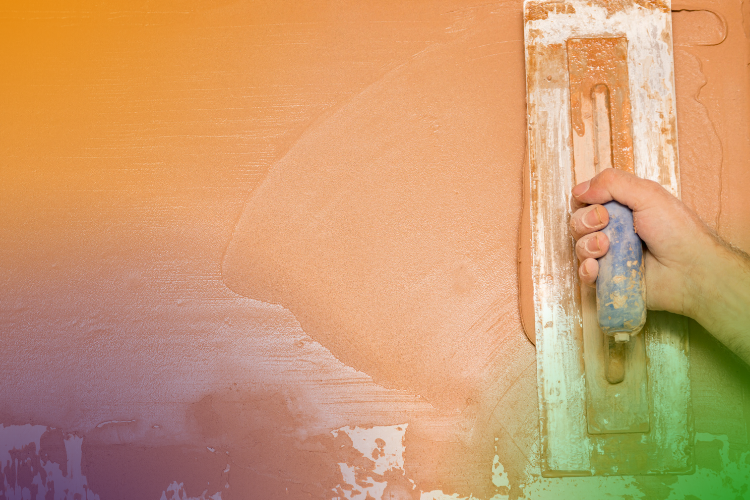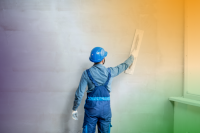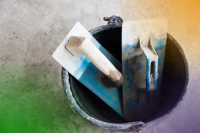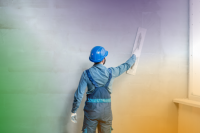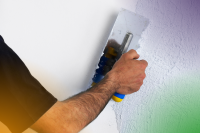What Is Browning Plastering?
Browning plaster - Bonding plaster and browning plaster are similar. They are both basically used as backing plaster to provide a layer to apply your final thin coat of skim plaster or multifinish plaster.
On areas which require a large amount of 'building up' it makes sense to apply some type of filler (for example expanding foam) so that you do not have to apply lots and lots of thin coats of bonding or browning plaster.
Bonding and browning plaster and backing plasters generally can only be applied in thin layers one at a time.
Wait for each layer to cure or 'go off' as plasterers say and then start your next layer.
Finish off your plastering by applying the 'top coat' which is referred to as 'skim' (because it is a thin 'skim' of plaster).
Applying the final coat of plaster is referred to as 'skimming' because plasterers use skimming plaster and apply a thin 'skim' of plaster to the walls or ceiling being worked on.
Dot and dabbing
Nowadays, there is a move more towards using drylining methods, or 'dot and dabbing' which essentially uses gypsum filled sheets of boarding with thin paper coatings either side (a board with plaster. i.e. plasterboard) which plasterers apply using dry wall adhesive in dots and dab it onto the wall.
Finally, they apply plastering skim finish, multifinish or board finish (they are pretty much the same thing).
You will find that most plasterers speak is fairly self explanatory when you realise the components making up materials and the basic practices.
It literally is a case of say what you see with plastering terms and you won't generally be far short of getting the meanings right.
What is bonding plastering?
Bonding plaster is a base coat which is often applied to many different surfaces including both walls and ceilings. Bonding is very versatile and a staple part of any plasterers go to 'materials list'. Bonding helps plasterers achieve a smooth finish by providing a key as it simply sticks well to the surfaces it is applied to. In addition to using bonding plaster as a base coat for surfaces which will be plastered with a skim layer or polished afterwards, it can also be used on surfaces like concrete too.
What thickness should bonding plaster be applied at?
Both bonding and browning plasters are considered undercoat plasters. Undercoat plasters are typically applied at 8mm thickness for ceilings and 11mm thickness for walls. Following application of undercoat layers then a finish coat is added which should be 2mm thick normally. One coat plasters are often just applied at a combination of the two separate undercoat and plaster finish thicknesses. Therefore, one coat plaster for the ceiling would be 10mm (8mm + 2mm) and for walls would be 13mm (11mm + 2mm).
Browning and bonding plaster drying times
The length of time undercoat plasters such as browning and bonding takes to dry can vary quite a lot. Factors which impact drying time can be the season of year. It can take longer for plaster to dry out in cold and damp weather whereas in Summer a plasterer might expect a wall to dry out very quickly indeed due to the heat and lack of moisture. Some bonding in warm weather might dry out in around 2-3 hours, but it is often best to leave any skimming work until the next day to be on the safe side. If you want to be sure then leaving 1-2 days between undercoat applications such as bonding and browning before application of top coats such as skimming and finishing. It is very easy to see whether the wall is ready since the colour of the plaster will get lighter and lighter as it dries out.
